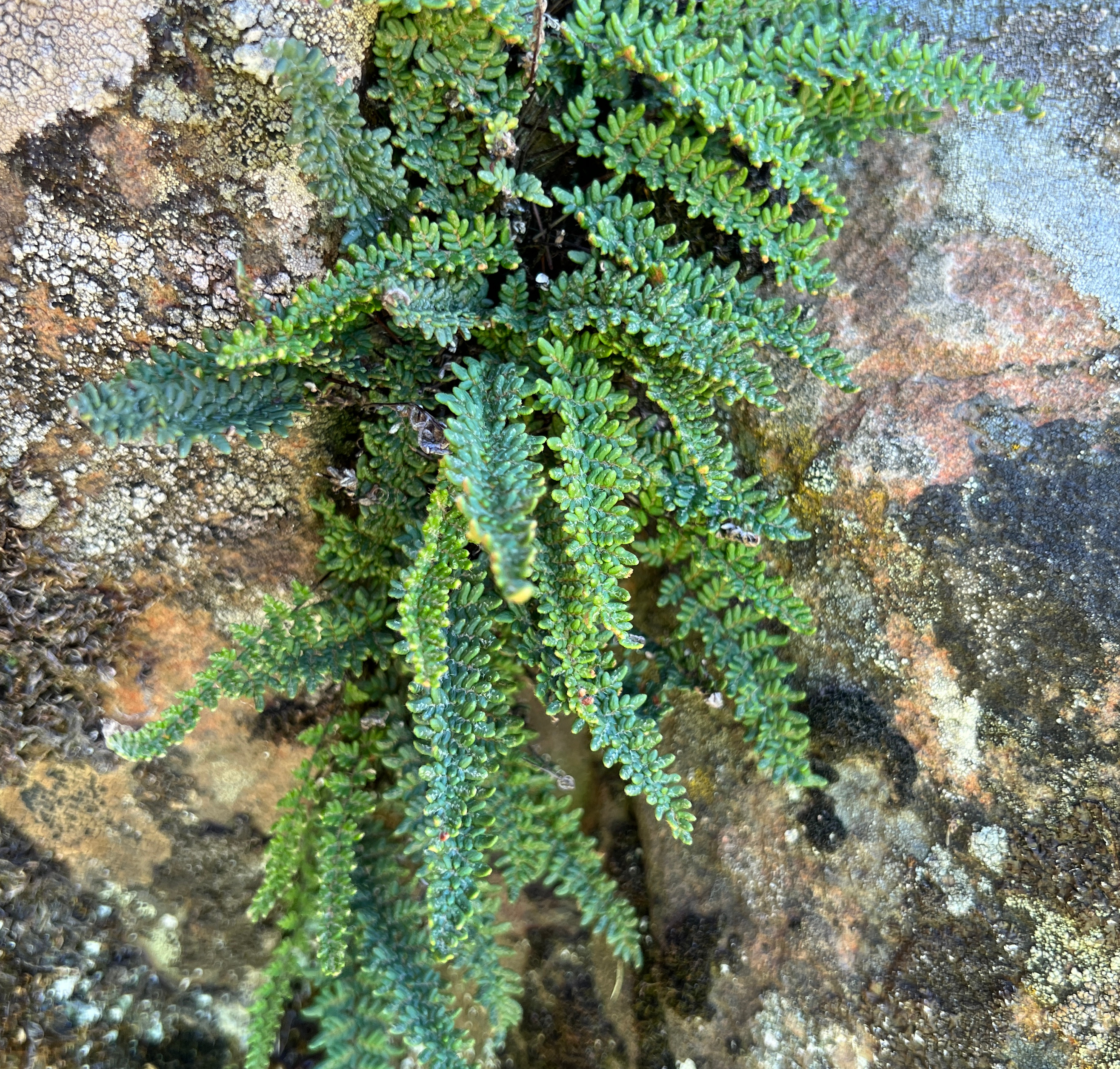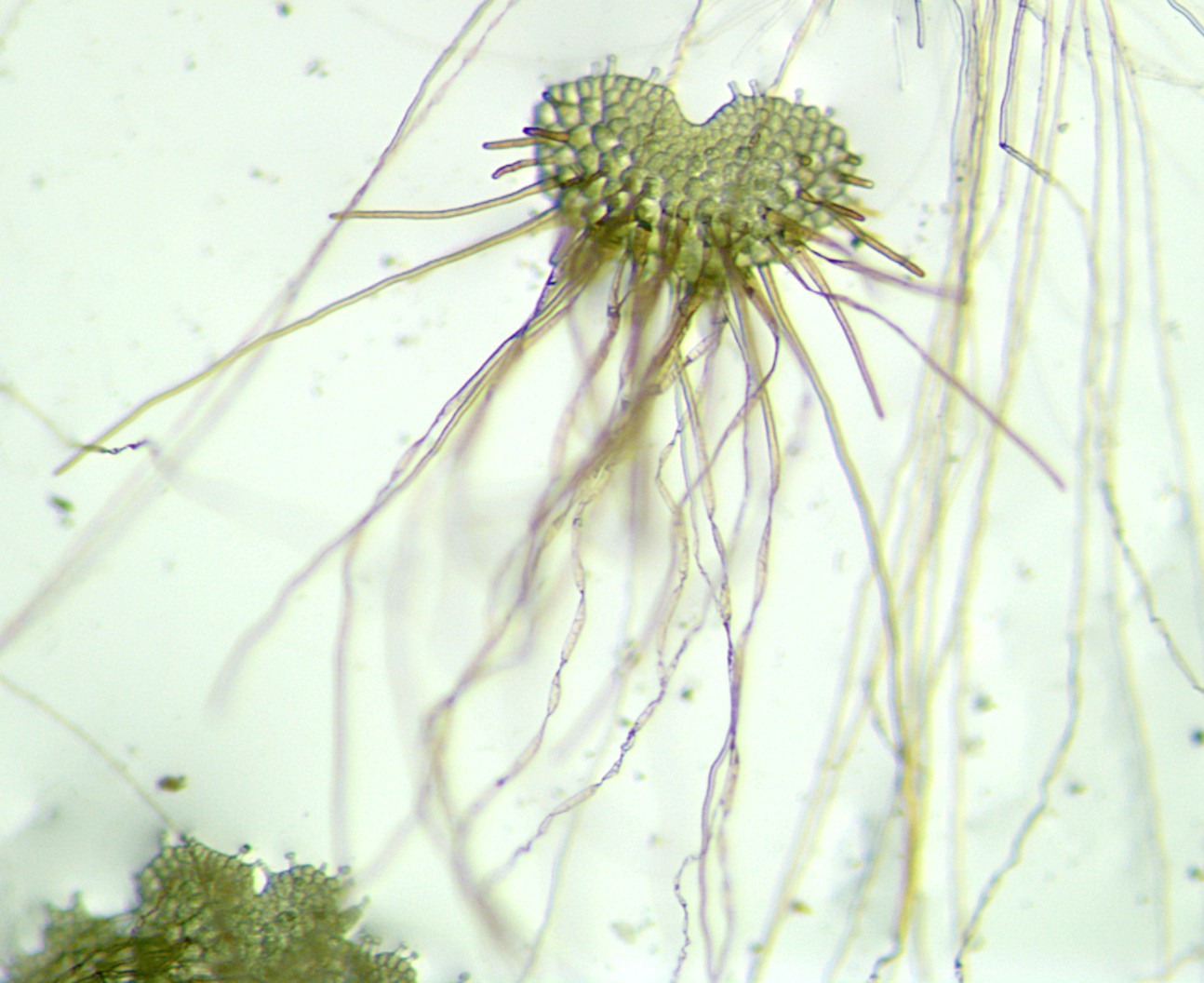|
Cheilanthoid
Cheilanthoideae is one of the five subfamilies of the fern family Pteridaceae. The subfamily is thought to be monophyletic, but some of the genera into which it has been divided are not, and the taxonomic status of many of its genera and species remains uncertain, with radically different approaches in use . Phylogenic relationships The following phylogram shows a likely relationship between Cheilanthoideae and the other Pteridaceae subfamilies. Although subfamily Cheilanthoideae itself is thought to be monophyletic, many of the genera into which it has been divided (including ''Cheilanthes'', ''Doryopteris'', ''Notholaena'', and ''Pellaea'') have been shown to be polyphyletic. Genera The division of the subfamily Cheilanthoideae into genera and species remains uncertain . Christenhusz et al. (2011), the Pteridophyte Phylogeny Group classification of 2016 (PPG I), and the November 2019 version of the ''Checklist of Ferns and Lycophytes of the World'' (''World Ferns'' 8.1 ... [...More Info...] [...Related Items...] OR: [Wikipedia] [Google] [Baidu] |
Myriopteris
''Myriopteris'', commonly known as the lip ferns, is a genus of cheilanthoid ferns. Like other cheilanthoids, they are ferns of dry habitats, reproducing both sexually and apogamously. Many species have leaves divided into a large number of small, bead-like segments, the probable inspiration for the generic name. Hairs and/or scales are often present on both the upper and lower surfaces of the leaf, and their presence and appearance are useful in distinguishing between species. The genus is most diverse in Mexico, but species are found from southwestern Canada south to southern Chile, and one species is endemic to southern Africa. Description No single morphological character divides ''Myriopteris'', as presently circumscribed, from the other cheilanthoids. Convergent evolution in arid environments is thought to be responsible for widespread homoplasy in the morphological characters traditionally used to classify this group. While small, bead-like ultimate segments are associate ... [...More Info...] [...Related Items...] OR: [Wikipedia] [Google] [Baidu] |
Pteridaceae
Pteridaceae is a family of ferns in the order Polypodiales, including some 1150 known species in ca 45 genera (depending on taxonomic opinions), divided over five subfamilies. The family includes four groups of genera that are sometimes recognized as separate families: the adiantoid, cheilanthoid, pteridoid, and hemionitidoid ferns. Relationships among these groups remain unclear, and although some recent genetic analyses of the Pteridales suggest that neither the family Pteridaceae nor the major groups within it are all monophyletic, as yet these analyses are insufficiently comprehensive and robust to provide good support for a revision of the order at the family level. Description Members of Pteridaceae have creeping or erect rhizomes. The leaves are almost always compound and have linear sori that are typically on the margins of the leaves and lack a true indusium, typically being protected by a false indusium formed from the reflexed margin of the leaf. Taxonomy Tradi ... [...More Info...] [...Related Items...] OR: [Wikipedia] [Google] [Baidu] |
Bommeria
''Bommeria'' is a genus of small pteridaceous rock ferns, native to the New World. Genetic analysis has shown it to be a stem offshoot clade of all the cheilanthoid ferns (in family Pteridaceae), except for ''Doryopteris'', which is an even more basal ("primitive") stem offshoot. for years, it was assumed that this genus was closely allied with ''Hemionitis'', but genetic analysis has shown that genus to be a more advanced genus evolutionarily. The same set of analysis has shown many presumed genera within this family to be paraphyletic, but the small genus ''Bommeria'' appears to be monophyletic, or a natural genus. ''Bommeria'' is a "gymnogrammoid" fern, exhibiting unprotected sori aligned along veins on the undersides of the fronds. This is why it was assumed to be closely allied to ''Hemionitis''. Such a feature is strongly at odds with most pteridoid ferns (Pteridaceae), which typically have linear marginal sori with an indusium, and sometimes protected with a reflexed l ... [...More Info...] [...Related Items...] OR: [Wikipedia] [Google] [Baidu] |
Adiantopsis
''Adiantopsis'' is a genus of ferns in the subfamily Cheilanthoideae of the family Pteridaceae Pteridaceae is a family of ferns in the order Polypodiales, including some 1150 known species in ca 45 genera (depending on taxonomic opinions), divided over five subfamilies. The family includes four groups of genera that are sometimes recogni .... Species , the ''Checklist of Ferns and Lycophytes of the World'' recognized the following species and hybrids: *'' Adiantopsis alata'' Prantl *'' Adiantopsis asplenioides'' Maxon *'' Adiantopsis aurea'' Link-Pérez, Seabolt & Ledford * ''Adiantopsis'' × ''australopedata'' Hickey, M.S.Barker & Ponce *'' Adiantopsis cheilanthoides'' R.M.Senna *'' Adiantopsis chlorophylla'' (Sw.) Fée *'' Adiantopsis crinoidea'' Link-Pérez & Hickey *'' Adiantopsis dactylifera'' Link-Pérez & Hickey *'' Adiantopsis dichotoma'' (Cav.) Moore *'' Adiantopsis flexuosa'' (Kunze) Link-Pérez & Hickey *'' Adiantopsis hickeyi'' Link-Pérez, Seabolt & Ledford *'' ... [...More Info...] [...Related Items...] OR: [Wikipedia] [Google] [Baidu] |
Cheilanthes
''Cheilanthes'', commonly known as lip ferns, is a genus of about 180 species of rock-dwelling ferns with a cosmopolitan distribution in warm, dry, rocky regions, often growing in small crevices high up on cliffs. Most are small, sturdy and evergreen. The leaves, often densely covered in trichomes, spring directly from the rootstocks. Many of them are desert ferns, curling up during dry times and reviving with the coming of moisture. At the ends of veins sporangia, or spore-bearing structures, are protected by leaf margins, which curl over them. Taxonomy The genus name is derived from the Greek words χεῖλος (''cheilos''), meaning "lip," and ἄνθος (''anthos''), meaning "flower." ''Cheilanthes'' as traditionally circumscribed is now known to be highly paraphyletic, comprising at least four generically separate groups. The type species, '' C. micropteris'', is most closely allied to the genera ''Aleuritopteris'' and '' Sinopteris'' (Schuettpelz ''et al.''). In the ... [...More Info...] [...Related Items...] OR: [Wikipedia] [Google] [Baidu] |
Argyrochosma
''Argyrochosma'' is a genus of ferns known commonly as false cloak ferns. The genus is included in the Cheilanthoideae subfamily of the Pteridaceae. Species now in this genus were previously treated as members of related genera ''Notholaena'' or ''Pellaea'' but were segregated into their own genus in 1987. These ferns, of which there are about 20 species, are mostly native to the Americas, from North to South and including the Caribbean, while one species, ''A. connectens'', is known from Sichuan, China. They are commonly found growing in cracks between rocks. Their leaves are generally shorter than 40 centimeters and have rounded bluish or grayish green segments. Often the lower surface of the segments is coated in a white dust, and the sporangia A sporangium (; from Late Latin, ) is an enclosure in which spores are formed. It can be composed of a single cell or can be multicellular. Virtually all plants, fungi, and many other lineages form sporangia at some point ... [...More Info...] [...Related Items...] OR: [Wikipedia] [Google] [Baidu] |
Gaga (plant)
''Gaga'' (gaga lipfern) is a genus of 19 species of ferns in the family Pteridaceae named after American singer and songwriter Lady Gaga. Two of the 19 species are newly- described: ''Gaga germanotta'' from Costa Rica, named after the family of the singer (she was born Stefani Germanotta), and ''Gaga monstraparva'', in honor of Gaga's fans, whom she calls "little monsters". According to biologists, the ferns bear a close resemblance to Gaga's costume from the 52nd Annual Grammy Awards and also bear a distinct DNA sequence spelling GAGA. Except for the two new species, the rest of the ''Gaga'' ferns were reclassified, having previously been assigned to the genus '' Cheilanthes'', based on their outward appearance. Biologists at Duke University explained that they listed the ferns with the name ''Gaga'', due to the singer's active support of equality and individual expression. The decision received widespread attention from the science community and the media. Description Pryer p ... [...More Info...] [...Related Items...] OR: [Wikipedia] [Google] [Baidu] |
Doryopteris
''Doryopteris'' is a genus of ferns in the subfamily Cheilanthoideae of the family Pteridaceae. Species The circumscription Circumscription may refer to: *Circumscribed circle * Circumscription (logic) *Circumscription (taxonomy) *Circumscription theory, a theory about the origins of the political state in the history of human evolution proposed by the American anthrop ... of the genus was uncertain . The ''Checklist of Ferns and Lycophytes of the World'' lists species in three groups. 1. ''Doryopteris'' s.s. – species and hybrids assigned to the genus in molecular phylogenetic studies: *'' Doryopteris adornata'' Yesilyurt *'' Doryopteris angelica'' K.Wood & W.H.Wagner *'' Doryopteris collina'' (Raddi) J.Sm. *'' Doryopteris concolor'' (Langsd. & Fisch.) Kuhn *'' Doryopteris decipiens'' (Hook.) J.Sm. *'' Doryopteris decora'' Brack. * ''Doryopteris'' × ''excisa'' Sehnem * ''Doryopteris'' × ''hybrida'' Brade & Rosenst. * ''Doryopteris'' × ''intermedia'' Sehnem *'' Doryopt ... [...More Info...] [...Related Items...] OR: [Wikipedia] [Google] [Baidu] |
Pentagramma
''Pentagramma'' is a small genus of North American ferns. Until 1990 members of this genus were included in ''Pityrogramma'', and there has been considerable disagreement regarding the species' taxonomy. In the most recent treatment, six diploid species are recognized. The distribution of ''P. triangularis'' (goldback fern) extends from British Columbia through the western United States into Baja California in northwestern Mexico.C.Michael Hogan, ed. 2010.‘’Pentagramma triangularis’’ . Encyclopedia of Life./ref> ''Pentagramma maxonii'' occurs in New Mexico, Arizona, Sonora, Baja California Sur, California, and Baja California. All other species are restricted to Californian and Baja California. Members of the ''Pentagramma'' genus produce a powdery-waxy secretion on their lower leaf surfaces, called farina. This character is shared with the related ''Notholaena'' genus. Species , the ''Checklist of Ferns and Lycophytes of the World'' recognized the following species ... [...More Info...] [...Related Items...] OR: [Wikipedia] [Google] [Baidu] |
Pellaea (plant)
''Pellaea'' is a genus of ferns in the Cheilanthoideae subfamily of the Pteridaceae. The genus name is derived from the Greek word πελλος (''pellos''), meaning "dark," and refers to the brown stems. Many members of the genus are commonly known as cliffbrakes. They primarily grow in rocky habitats, including moist rocky canyons, slopes, and bluffs. Distribution Ferns in this genus are most abundant and diverse in the southwestern United States south into Andean South America, central and southern Africa, and eastern Australia to New Zealand. Description These ferns typically have creeping rhizomes and pinnately to bipinnately compound leaves lacking prominent scales or trichomes on the blades. Like most members of Pteridaceae, they have marginal sori protected by a false indusium formed from the reflexed leaf margin. The distinction of ''Pellaea'' from the typically hairier or scalier '' Cheilanthes'' has proven difficult, with some members being of uncertain affinity ... [...More Info...] [...Related Items...] OR: [Wikipedia] [Google] [Baidu] |
Paragymnopteris
''Paragymnopteris'' is a genus of ferns in the subfamily Cheilanthoideae of the family Pteridaceae. Species of ''Paragymnopteris'' are native to the Old World The "Old World" is a term for Afro-Eurasia that originated in Europe , after Europeans became aware of the existence of the Americas. It is used to contrast the continents of Africa, Europe, and Asia, which were previously thought of by the .... Species , the ''Checklist of Ferns and Lycophytes of the World'' recognized the following species: *'' Paragymnopteris bipinnata'' (Christ) K.H.Shing *'' Paragymnopteris borealisinensis'' (Kitag.) comb. ined. *'' Paragymnopteris delavayi'' (Baker) K.H.Shing *'' Paragymnopteris marantae'' (L.) K.H.Shing *'' Paragymnopteris sargentii'' (Christ) K.H.Shing *'' Paragymnopteris vestita'' (Wall. ex C.Presl) K.H.Shing References Pteridaceae Fern genera {{Pteridaceae-stub ... [...More Info...] [...Related Items...] OR: [Wikipedia] [Google] [Baidu] |
Ormopteris
''Ormopteris'' is a genus of ferns in the subfamily Cheilanthoideae of the family Pteridaceae. Species are native to Brazil and Venezuela Venezuela (; ), officially the Bolivarian Republic of Venezuela ( es, link=no, República Bolivariana de Venezuela), is a country on the northern coast of South America, consisting of a continental landmass and many islands and islets in th .... Species , the ''Checklist of Ferns and Lycophytes of the World'' recognized the following species: *'' Ormopteris crenata'' (R.M.Tryon) Barbará *'' Ormopteris cymbiformis'' (J.Prado) Barbará *'' Ormopteris flavescens'' (Fée) Barbará *'' Ormopteris gleichenioides'' (Gardner) J.Sm. *'' Ormopteris pinnata'' (Kaulf.) Lellinger *'' Ormopteris riedelii'' (Baker) Barbará References Pteridaceae Fern genera {{Pteridaceae-stub ... [...More Info...] [...Related Items...] OR: [Wikipedia] [Google] [Baidu] |


